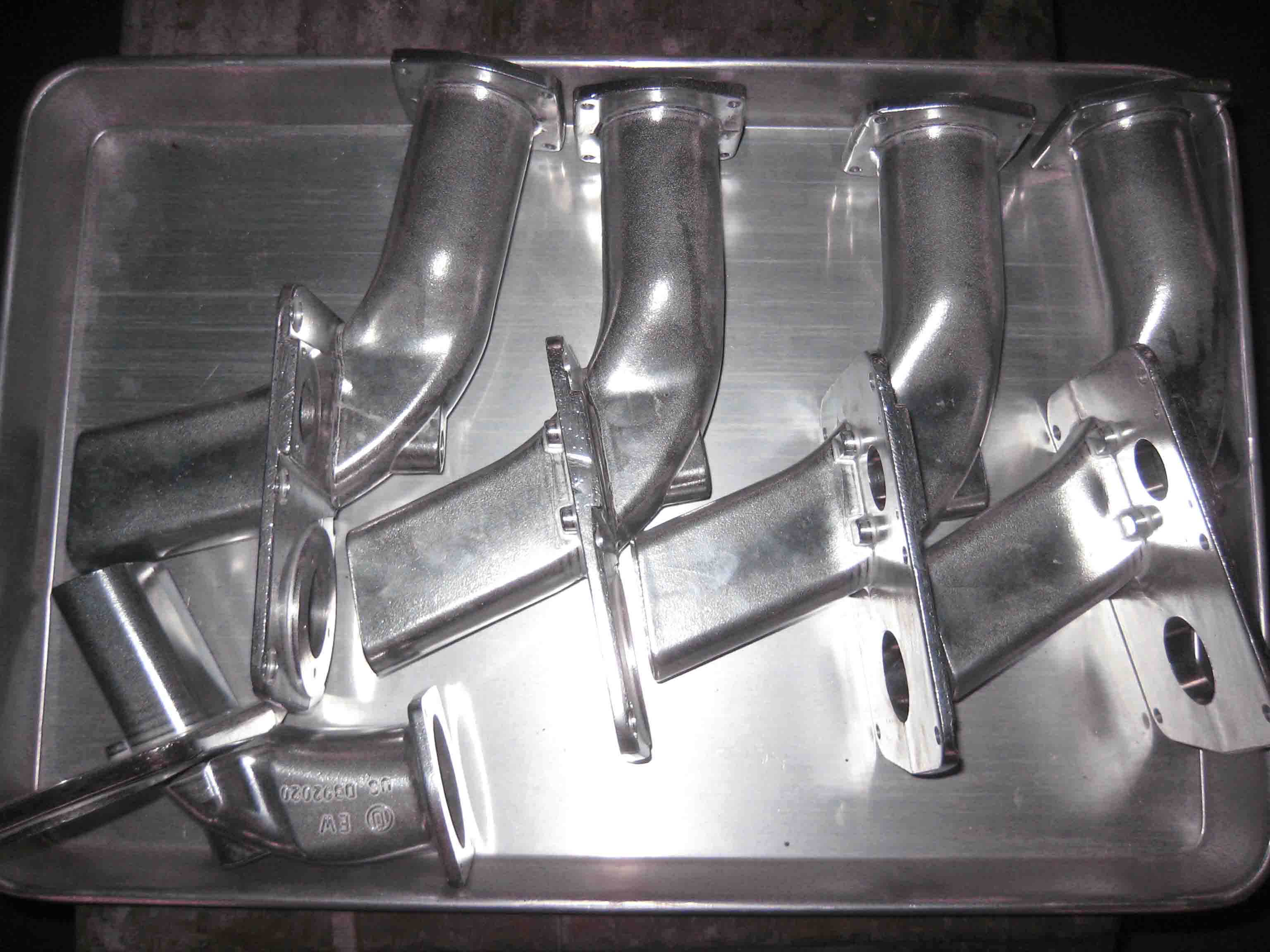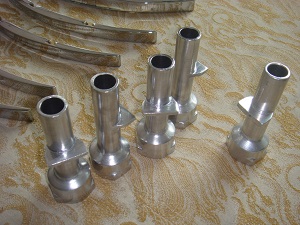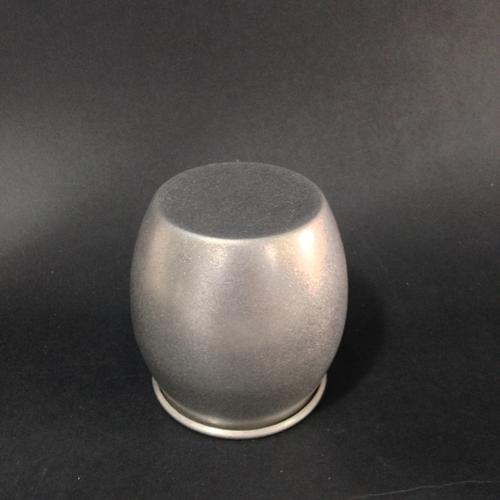Are You Using the Right Finishing System ?
In the metal finishing industry, the term “mass finishing” refers to the ability to cost-effectively finish large quantities of parts at one time. This process is widely utilized for applications such as deburring, burnishing, rust and scale removal, brightening, and polishing surfaces of parts and components. Two of the most common types of mass finishing systems are tumble finishing—also known as barrel finishing—and vibratory finishing. Each system has its own advantages and disadvantages depending on factors such as part size, material type, and project requirements.
Mass finishing techniques are frequently employed in industries that require high-quality finishes for aluminum casting, sand casting, high-pressure die casting, low-pressure die casting, and gravity casting components. Selecting the right finishing system is crucial for achieving optimal results while managing costs effectively.
What Is Tumble Finishing ?
Tumble finishing, often referred to as barrel finishing, is a process that mimics the action of rocks tumbling down a steep hill. In this method, parts are placed in a rotating barrel along with water, abrasive media, and appropriate compounding agents. As the barrel rotates, the media mass and parts tumble over one another, creating friction that abrades the surfaces of the parts. This cutting action leads to efficient deburring and surface refinement.
Tumble finishing systems are typically batch-type processing machines, although single-pass processing and in-line batch processing equipment are also available for specific applications. This method is particularly effective for removing burrs and sharp edges from parts produced through aluminum casting or sand casting processes.
One notable aspect of barrel finishing is its ability to minimize wear on abrasive media during operation, which can lead to cost savings over time. However, the tumbling action increases the risk of surface indentations as parts collide with one another during processing—a potential drawback for delicate components or tight-tolerance projects.
What Is Vibratory Finishing?
Vibratory finishing involves placing parts, media, and compounds into a vibratory tub or bowl. The vibratory motion creates forces that cause the media and parts to grind against each other, effectively deburring or polishing the components. This system is highly versatile and can be used for a wide range of applications, including cleaning, descaling, polishing, and surface preparation.
Vibratory equipment is available in various configurations such as batch tubs, round bowls, or thru-feed machines. These systems are capable of achieving levels of deburring or burnishing that are unattainable by manual processes. Vibratory finishing is particularly well-suited for aluminum casting components that require smooth finishes or precise tolerances.
One of the key advantages of vibratory finishing is its compatibility with automation, which can significantly reduce labor costs and improve efficiency. Additionally, this method produces smoother finishes without causing excessive surface wear, thereby enhancing the durability and lifespan of the finished parts.
Comparing Tumble Finishing and Vibratory Finishing
When comparing tumble finishing and vibratory finishing systems, it’s important to consider factors such as cost, efficiency, durability, and suitability for specific applications. Below is a breakdown of key differences between the two methods:
Efficiency and Automation
Vibratory finishing is generally more efficient than tumble finishing due to its compatibility with automation systems. Automated vibratory equipment can handle larger volumes of parts in less time compared to batch-type barrel systems. This makes vibratory finishing particularly advantageous for high-production environments such as those involving high-pressure die casting or low-pressure die casting components.
Surface Finish Quality
Vibratory finishing tends to produce smoother finishes with less surface wear compared to tumble finishing. This is especially important for delicate parts or projects requiring tight tolerances. For example, gravity casting components often benefit from the gentle rubbing action of vibratory equipment.
In contrast, tumble finishing may result in surface indentations due to parts colliding with one another during processing. While this method is effective for deburring and burnishing, it may not be ideal for projects requiring pristine surface finishes.
Cost Considerations
Barrel finishing systems are simpler in design compared to vibratory systems, making them less expensive to purchase and operate. Additionally, barrel systems generate less wear on abrasive media, which can lead to long-term cost savings. However, they typically take longer to complete finishing tasks.
Vibratory systems, while more expensive upfront, offer faster processing times and higher-quality finishes. For industries dealing with aluminum casting or sand casting components where surface quality is paramount, this investment can be worthwhile.
Part Size and Material Type
Vibratory finishing is better suited for very large or delicate parts due to its gentler action and ability to accommodate tight tolerances. On the other hand, tumble finishing is effective for smaller or more robust components that can withstand the tumbling motion without damage.
Choosing the Right System for Your Application
Selecting between tumble finishing and vibratory finishing depends on several factors, including the type of material being processed (e.g., aluminum casting or sand casting), the desired surface finish quality, production volume requirements, and budget constraints. Here are some considerations to keep in mind:
For Large or Delicate Parts: Vibratory finishing is often the better option due to its smoother action and compatibility with automation.
For Cost-Sensitive Projects: Barrel systems may be more economical in terms of initial investment and media wear.
For High-Quality Finishes: Vibratory systems excel at achieving smooth finishes without excessive surface wear.
For Batch Processing: Both systems can handle batch processing effectively, but vibratory systems may offer faster turnaround times.
By carefully evaluating your project requirements and understanding the strengths and weaknesses of each system, you can make an informed decision that optimizes both cost-effectiveness and quality.
Mass finishing plays a critical role in preparing metal components for use across various industries. Whether you’re working with aluminum casting, sand casting, high-pressure die casting, low-pressure die casting, or gravity casting parts, selecting the right finishing system can make all the difference in achieving your desired results.
Tumble finishing offers simplicity and cost savings but may not be ideal for delicate or high-tolerance projects. Vibratory finishing provides superior surface quality and efficiency but comes with higher upfront costs. By weighing these factors against your specific needs, you can ensure your finishing process aligns with your production goals while maintaining cost-effectiveness.
Ultimately, understanding the strengths and limitations of both tumble and vibratory finishing systems will empower you to make informed decisions that enhance productivity and deliver exceptional results for your metal finishing projects.
Product Pictures
 |  |  |